How to Score a Tennis Match - Love and Absurdity
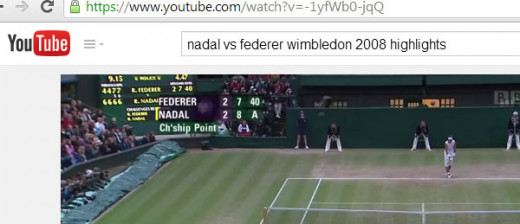
The only annual tennis tournament we care about in the States--The US Open, at Flushing Meadows, NY--starts today, in 2014. For this reason I thought to take some time and explain some of the basics of the sport to those who might casually observe this hyper-awesome tennis tournament:
"How to Score a Tennis Match" - Should be easy right, since it's the most fundamental requirement in order to enjoy watch a match? Right ... I will attempt to explain this in a simple way, but it may seem comically complicated at times, and downright nonsensical in others. But please keep this in mind the whole time: I absolutely love tennis.
Tennis is a fast-paced sport featuring lots of action, high-scoring matches, and a roster of athletes ripe with compelling stories, characters, and rivalries. The season is long, with hundreds of matches and dozens of tournaments that span the globe ... By those accounts, tennis should be a popular sport in the United States--but it's not. Only 2% of all adults who follow one or more sports consider tennis (Men's tennis, the ATP, specifically) to be their favorite; trailing behind the obvious football, baseball, and basketball, but also hockey, college basketball, and auto-racing, to name a few. There are many reasons for this popularity paradox--I believe--but one is probably because of the nonsensical scoring system that we use in our sport. I'm going to describe it in the most basic way I can, and--chuckles--you'll see what I mean ...
Who is winning? Can you tell?
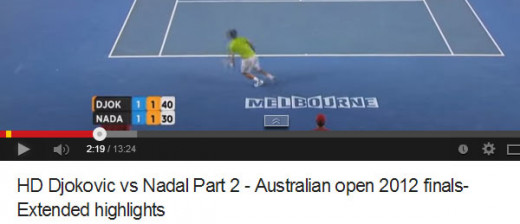
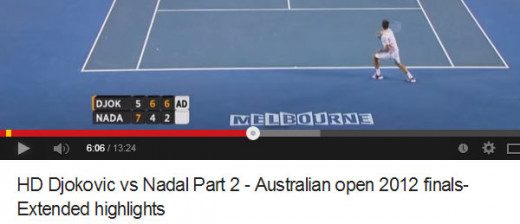
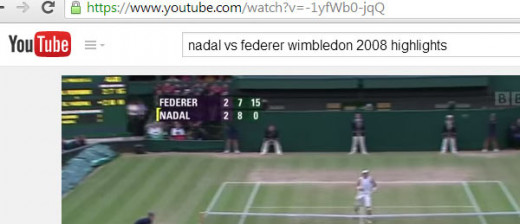
Do you ever get confused when watching tennis?
What is a point in tennis?
How to win a point is beyond the scope of this piece. But to enjoy spectating a sport you typically need to be able to answer the question, "who is winning?" And knowing the score, and the importance of the score, helps identify important moments and helps keep you engaged in what you're watching. A tennis match is comprised of sets, and games, and points are integral in understanding these. You need points to win games, and each game counts as a point toward winning a set and each set counts as a point towards winning the match.
You need points in order to win games. If you have zero points we call that "love". But "love" isn't exclusive to in-game points. If you have zero games we also call that "love" and if you have zero sets we also call that "love". So "love" can mean a point, game, or set score of zero (don't worry, we'll talk about games and sets later). But the scoreboard doesn't say love. It says zero. Only the commentators and sometimes the chair umpire will call it "love", further obfuscating a newcomers ability to understand what's going on.
It takes four points to win a tennis game, but we don't count like normal rational people. Instead, the first point you score in a game is worth fifteen and we call it 15. The second point is worth another fifteen and we call it 30. The third point is worth ten (poor third point) and we call it 40. The next point doesn't have a numeric value. We just call it "game" and that means the game is won. Visualize this: Love, 15, 30, 40, game. The current score of the game is called before every serve, always declaring the server's score first. An example of someone with 3 points to 1 point looks like this: 40-15. Two points to two points looks like this: 30-30 and is called "30-all". Makes sense, right? If only it were that easy ...
Most tennis matches--but not all, lol--employ what is called "advantage scoring" for the games, meaning: in order to win a tennis game you have to "win by two" points. So, if both players reach a score of 40 we don't call it 40-all, we change the name of the score to a term called "deuce", and the next point no longer wins the game. Ostensibly we use the term deuce because a minimum of two more points must be played to decide the game. At this stage in the game, scoring no longer earns you numerical points, but instead earns you descriptions of your position in the game. The next person who scores after deuce now has a score called "advantage" and the score is called "Advantage-[player]", like "Advantage Federer". If the player with the score of advantage wins the next point, they win the game. Sweet! But, if the player who doesn't have advantage wins the points then the score reverts back to deuce. This process repeats indefinitely until one of the players wins the points with a score of "advantage". So, a more accurate description of possible in-game tennis scores looks like this: love, 15, 30, 40, deuce <-> advantage (if needed), game.
Deuce, Set Point, and a Tiebreak. Simple, right?
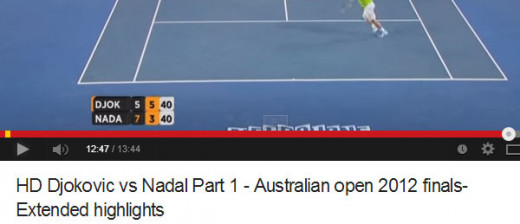
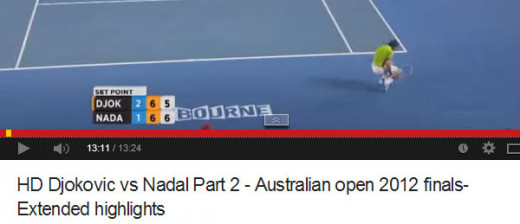
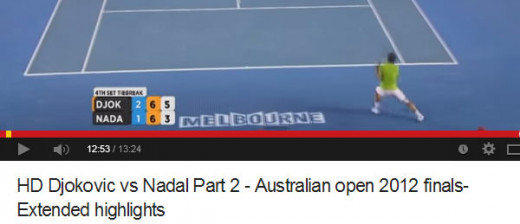
"Wait, I've watched tennis before and I hear the commentators say things like 'break point' and 'up a break' and 'game point'. Seems to be a big deal. What's al
Oh, I'm glad you pointed that out. It's probably one of the most confusing aspects in all of tennis (besides advantage scoring). See, the rules of tennis favor the server (Explaining why is again beyond the scope. Just believe me.), so there is important terminology to signify this. If the server has the score of advantage then the next point is called "game point". If the player returning the serve has advantage the next point is called "break point". The importance of game points and break points leads us to ...
How do you win a tennis match?
A tennis match is comprised of sets, and sets are comprised of games. So you can't just know how to tell the score in a game, you also have to be able to tell the score in a match. In most tennis matches--but not all, lol--you have to win two out of three sets. So how do you win a set? The first player to win six games--by a margin of at least two games--wins the set. Thankfully, the number of games won by a player in a set are represented by descriptive numbers. One game = 1, two games = 2, and so on. Sweet!
Back to the importance of break points: since the person serving the ball has the advantage in tennis, they are expected to win their service games. The players alternate serving after each game and switch sides of the court after every two games. If the player serving always wins the game then no player will ever gain the margin of two games needed to win the set. However, if the returner wins a break point, now it is possible to win the set so long as they can win their service games. Imagine it like this: It's me versus Federer and the game score of the set is 4-all, and Federer is serving, and I have advantage. That's a break point opportunity. If I win the break point, now it's my turn to serve and the game score in the set is now 5-4 and I'm expected to win my service game, which would give me a score of 6-4 which wins the set. This places a tremendous importance on break points.
Sometimes you end up with a game score of 6-6 in a set. Most sets--but not all--are played as "tie break sets" meaning that at a score of 6-all a special type of tennis game is played called a "tie breaker". Ugh ... to try to describe a tie breaker ... In a tie breaker each point is worth one point (not 15, 10, deuce, advantage like before). Literally the scoring system, serving rules, and changing of ends rules all completely change during a tie break. The first player to win 7 points, by a margin of two (hahahaha! Win by two, again) wins the tie break and is awarded the set. The serve alternates every two points and the players switch sides of the court every six points. It's not uncommon for tie breakers to exceed 7 points. Sometimes you'll see tie breaker scores of 14-12, or 9-7, and so on ...
Should tennis commentators include more information about basic rules for new / potential fans?
"You said that most sets are tie-breaker sets? What's the alternative?"
I'm glad you brought this up. It's another wonderfully confusing aspect of tennis. Dozens of important tennis tournaments are played each year, and the majority of them play best two out of three tie-breaker sets to decide the winner. But most casual fans end up watching what are called the "Major" tournaments: Australian Open, The French Open, Wimbledon, and the US Open. In what must be some sort of cruel joke, the rules at these tournaments are different than the vast majority of other tournaments. They all play best three out of five sets. Sets one through four are all played as tie-breaker sets at all the tournaments. But at all but the US Open the final set is played as an "advantage set". What does that mean? You guessed it! In order to win the fifth set in one of those Majors, you have to be the first player to win six games by a margin of at least two--Win by two, again! A winner will not be decided until a player has won by a margin of two games. This can produce ridiculous fifth set scores, like the most extreme example: 2010 Wimbledon match between USA's John Isner and France's Nicolas Mahut penned a historic fifth set score of 70 to 68 games. The final set alone took 8 hours and 11 minutes to decide. The US Open plays a tie-breaker in all five sets in a rare example of the United States leading the charge for a much-needed progressive change to the sport.
"That was confusing as shit. Thanks. I think I understand tennis less now."
I was afraid of that ... but I don't blame you. It's absurd how complicated and nonsensical the scoring system is in our sport. It's a fantastic spectator sport that anyone could sit down and watch and enjoy but the scoring system is so difficult to understand and the professional commentators do almost nothing to guide the uninitiated. Instead, viewers are routinely exposed to images like the ones in this article and casual viewers inevitably "tune out" in their minds and that's it ... potential fan, gone.
I play tennis. My friends and family members play tennis. We know professional tennis players. Tennis is on TV in our house routinely. I remember looking to my lovely wife, pointing to the TV and asking, "So, do you understand what you're seeing right now? Could you tell me who is winning?" She chuckled, shrugged, and said, "No."
And to that I thought, game, set, and match ...
Watch highlight from what many consider to be the best match of tennis ever played. Can you tell what score it is during all of the points?
© 2014 Time Spiral





